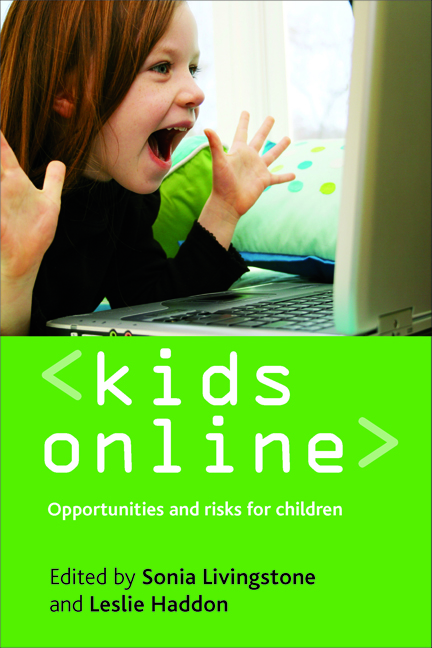Book contents
- Frontmatter
- Contents
- Notes on contributors
- Acknowledgements
- one Introduction
- Section I Researching European children online
- Section II Going online: new opportunities?
- Section III Going online: new risks?
- Section IV Policy implications
- Appendix A List of country codes
- Appendix B Children and parents online, by country
- Appendix C The EU Kids Online network
eight - Young people online: gender and age influences
Published online by Cambridge University Press: 15 July 2022
- Frontmatter
- Contents
- Notes on contributors
- Acknowledgements
- one Introduction
- Section I Researching European children online
- Section II Going online: new opportunities?
- Section III Going online: new risks?
- Section IV Policy implications
- Appendix A List of country codes
- Appendix B Children and parents online, by country
- Appendix C The EU Kids Online network
Summary
Setting the scene
Digital technologies and their use among children and young people in Europe have become increasingly more complex and pervasive (Livingstone and Bovill, 2001; Larsson, 2003; Lenhart, 2005). Numerous studies show that young people are far from homogeneous, yet age and gender continue to be particularly strong predictors of patterns of use (Wartella et al, 2000). Age differences are usually supposed to be linear: with age one tends to engage in more online opportunities and in more risky behaviour. Gender differences are commonly supposed to be strong but unpredictable (Weiser, 2000). The gender picture becomes more complex when one compares young children with teenagers as to their experience of online opportunities and risks, also taking into account cultural differences between countries. Because of these complexities, in this chapter gender and age-based practices are interpreted within a theoretical framework that incorporates the study of the digital divide, the uses-and-gratifications theory and gender socialisation theory.
Defining the digital divide as binary is not a useful approach: one is not either in or out, digitally included or excluded. Hence, it makes much more sense to map a continuum of use with gradations in digital inclusion, from non-use through low use to more frequent use. Substantial differences in adoption styles and online attitudes are due to socio-demographics as well as psychological factors (Broos and Roe, 2006). Van Dijk (2006) questions which inequalities the digital divide concept actually refers to, making distinctions between different kinds of digital divide (material, motivational, skills and usage) and the importance of potentially missing out on technologically mediated opportunities in terms of life chances, resources, participation and capabilities. Livingstone and Helsper's (2007) ladder of online opportunities is put forward as a useful analytical tool for exploring variations in the breadth and depth of digital technologies’ use. While the gender divide in access has closed in North America and north-western Europe, gender gaps in usage persist. Obviously, none of this evidence is static: it is therefore crucial to see how digital media applications change over time as well as users’ expectations and interests.
Digital technologies are usually used to gratify certain needs or wants. The uses-and-gratifications research tradition focuses on factors influencing motives for use and outcomes from people's media-related behaviour (Newhagen and Rafaeli, 1996).
- Type
- Chapter
- Information
- Kids OnlineOpportunities and Risks for Children, pp. 95 - 106Publisher: Bristol University PressPrint publication year: 2009



